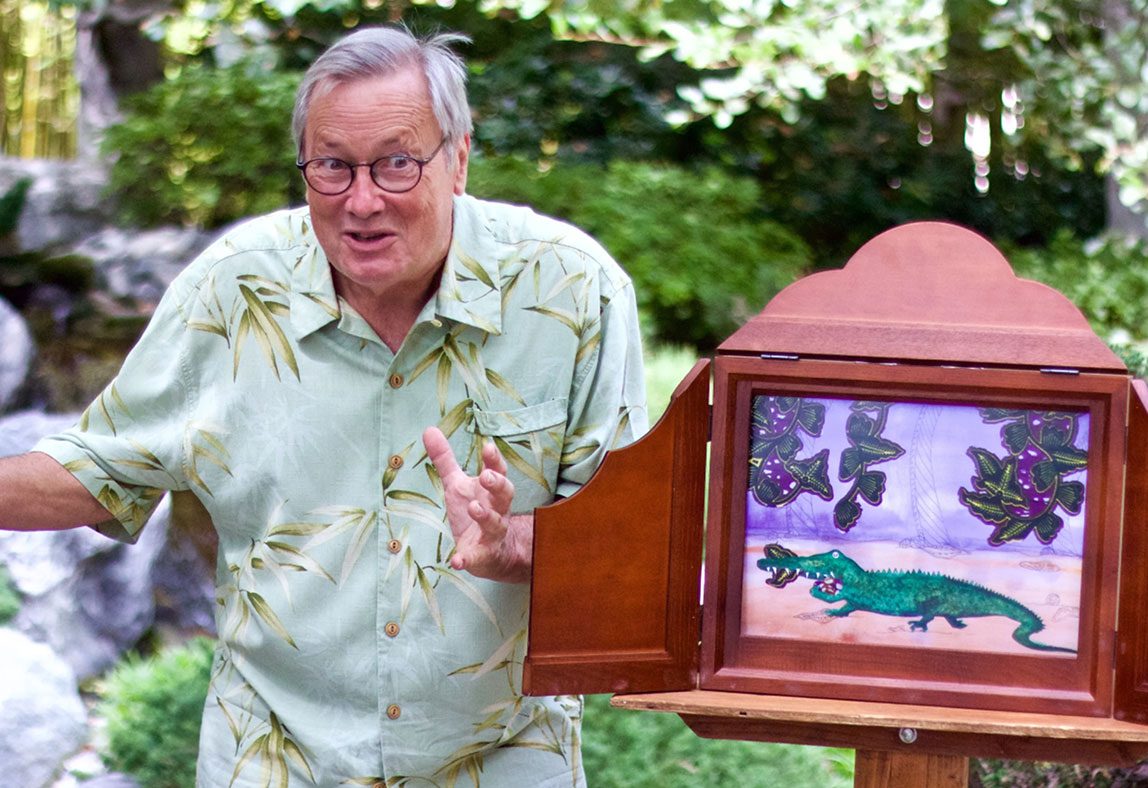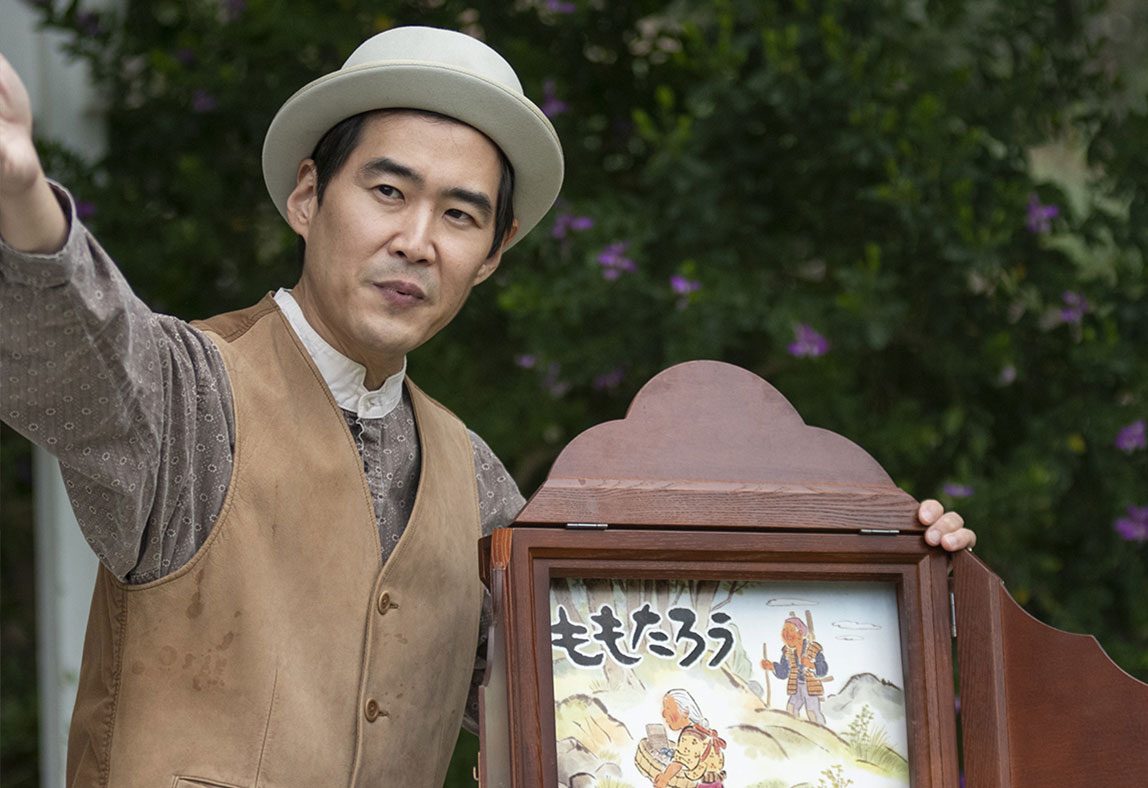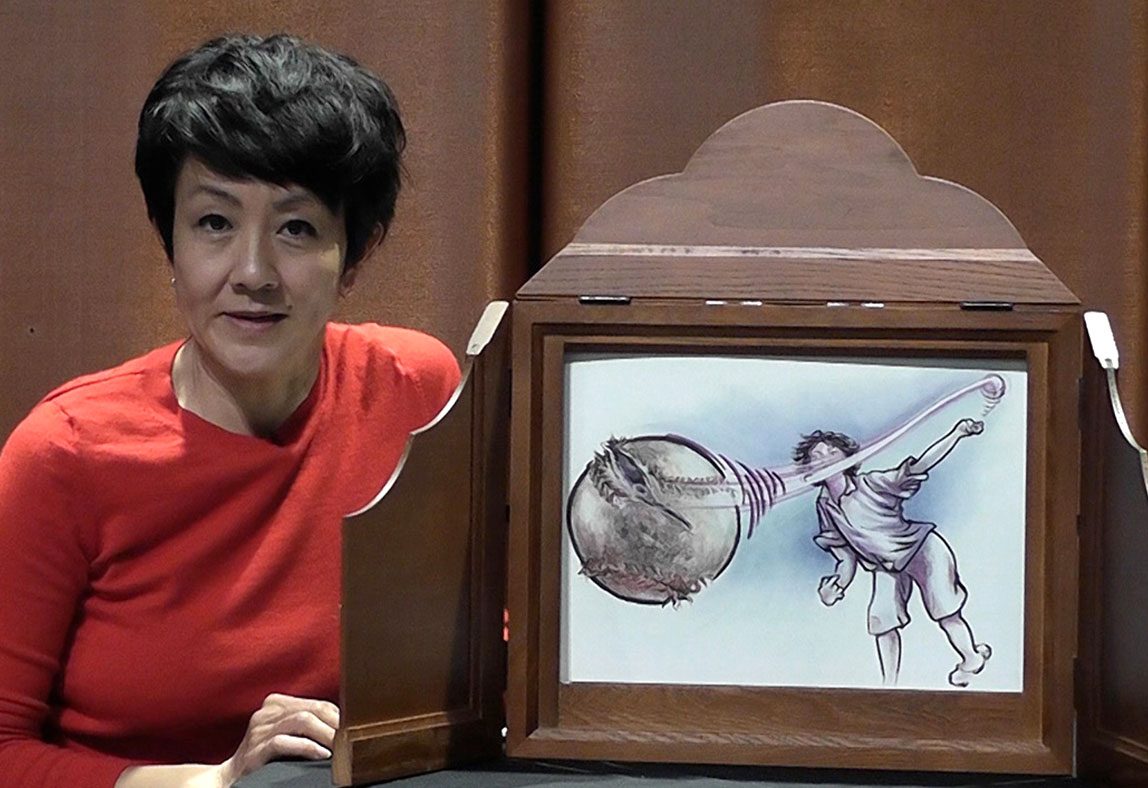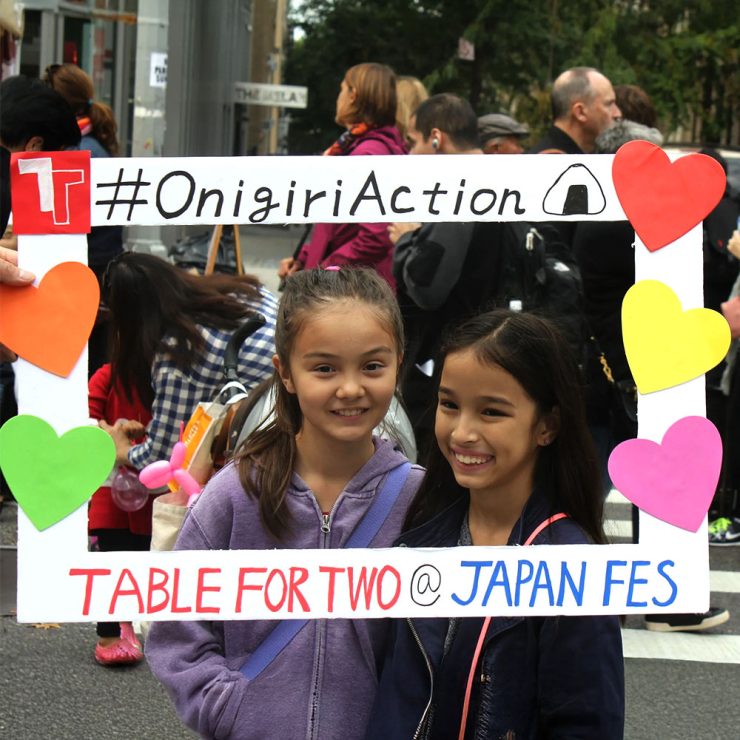
Kamishibai Storybox
KAMISHIBAI (STORYBOX) brings international folk tales and other stories to life for people, from toddlers to teens and beyond. In this Japanese storytelling tradition, a professional storyteller reveals a series of illustrations as the narrative unfolds.
Brief History of Kamishibai
K
amishibai was invented Tokyo in 1929 to present stories to children on street-corners. Little wooden “theatres” were mounted on the back of bicycles which storytellers rode from corner to corner (and in the countryside, from village to village). The kamishibai-man clapped his wooden hyoshigi to announce his arrival. Children rushed to enjoy his stories…and to buy his candies. Those who purchased his candy sat in the front row. The stories were free.
Kamishibai grew rapidly nationwide, spawning competing syndicates that produced a steady supply of stories to thousands of kamishibai-ya (kamishibai storytellers) in every corner of Japan. It has been estimated that by 1938 there were as many as 50,000 kamishibai storytellers entertaining a million children a day.
During World War II, kamishibai was used by the government to disseminate propaganda. Because it moved easily even into bomb-shelters and devastated neighborhoods, kamishibai provided information and entertainment for both adults and children.
After the war, kamishibai remained robust until television reached Japan in 1954. In fact, television in Japan was called denki-kamishibai (or “electric kamishibai”). Suddenly kamishibai audiences dwindled. But as the number of street kamishibai decreased, the use of kamishibai in classrooms and libraries increased.
Today kamishibai in Japan is experiencing a resurgence. Many Japanese people have made it an avocation. They regularly perform kamishibai stories outdoors in parks and festivals. Others take kamishibai right into department stores to find an audience. This renewed energy is not limited to Japan. In more than 50 other countries – as diverse as Slovenia, Morocco, and Peru – kamishibai is being used to entertain and educate.






